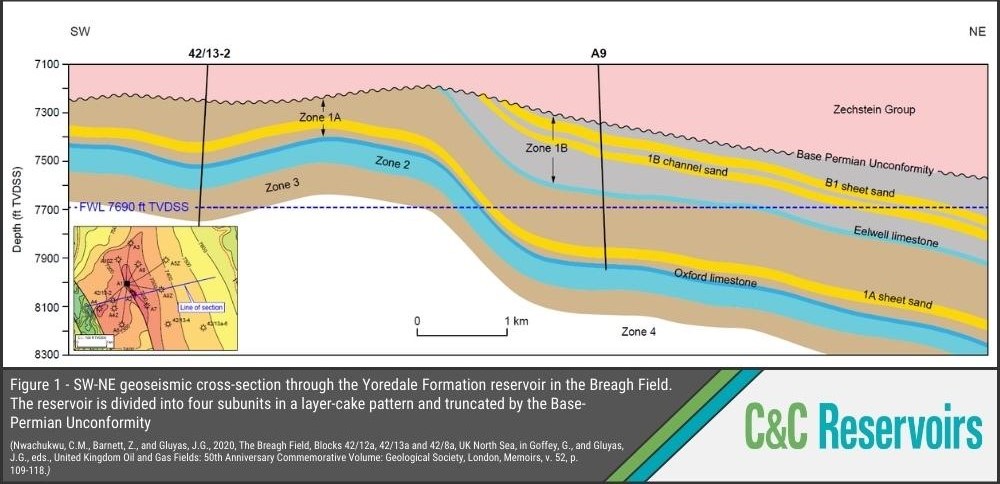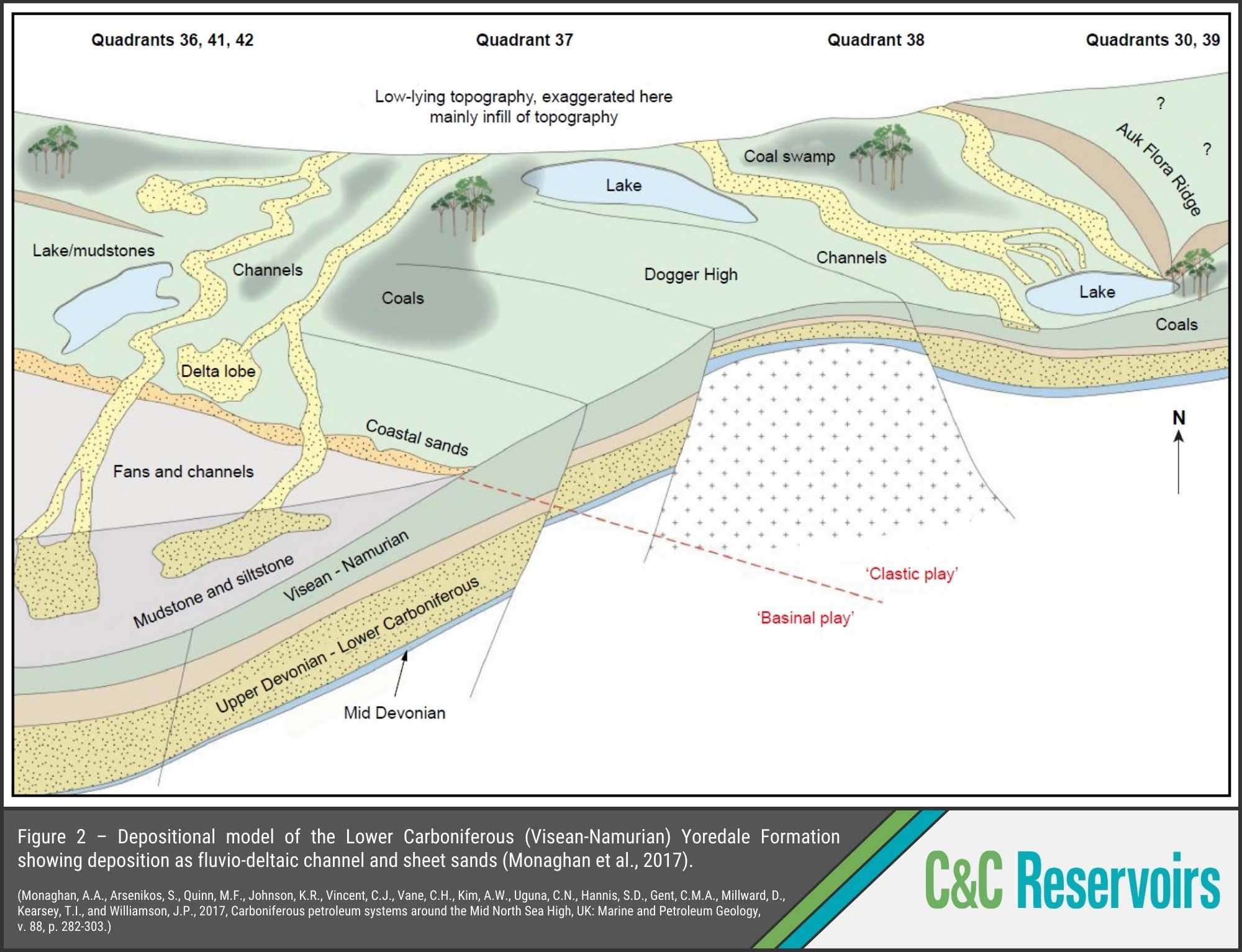The Breagh Field
Analogue Spotlight
The Carboniferous of the Southern North Sea has long been considered a high-risk play. Zechstein salt in the overburden makes depth conversion difficult while very thick, repetitive sequences are hard to correlate even with core data. Reservoir quality is assumed to be poor outside channel sandstones and intraformational seal capacity is poorly understood.
The Breagh Field offers some hope for a Carboniferous revival (Fig. 1). The block was relinquished when an exploration well flowed at only 3-4 MMCF/day but reappraisal showed that overbalanced drilling with water-based mud had damaged the microporous reservoir. Later wells, drilled with oil-based mud and minimal overbalance, flowed 10-26 MMCF/day and confirmed the Yoredale Sandstone’s good lateral connectivity. Many discoveries in low-permeability sands may have been wrongly declared non-commercial due to formation damage.
Permeable channel sands are widely regarded as key to the success of Carboniferous fields in the Southern North Sea. These are important sandbodies at Breagh but gas is also produced from mouth bars and sheet sandstones of only 10 mD average permeability (Fig. 2). This is largely due to the success of hydraulic fracturing in S-shaped wells, which increased well rates 4-10 fold and provided up to 45% of daily production. Maybe technology, not lithofacies, is the key to success.
The Digital Analogue Knowledge System (DAKS™) contains many global oil and gas analogues specifically focused on heavy oil fields. Use these analogues to benchmark your own field, and delve into C&C Reservoirs Reservoir Evaluation Reports to discover best practices from top performing reservoirs that can be applied to your own assets.


